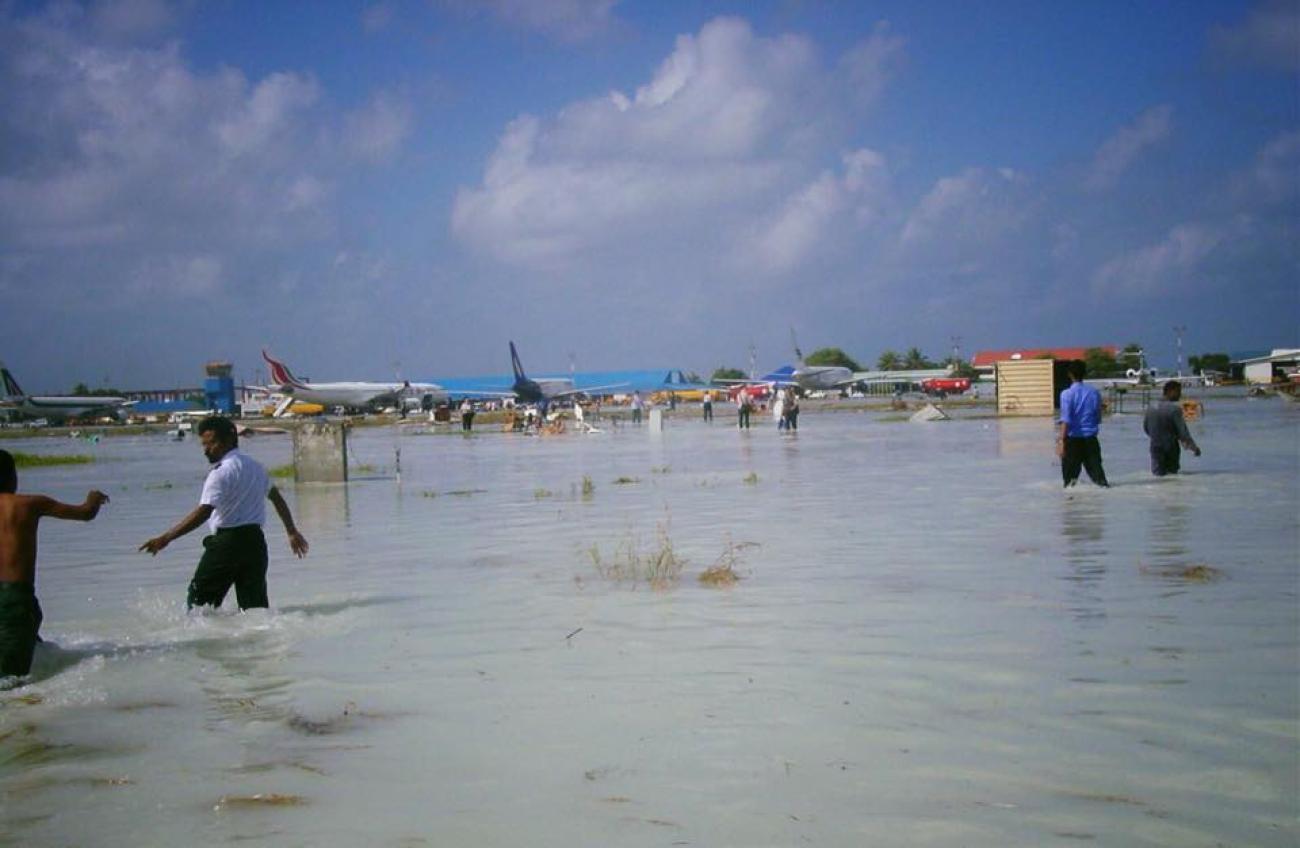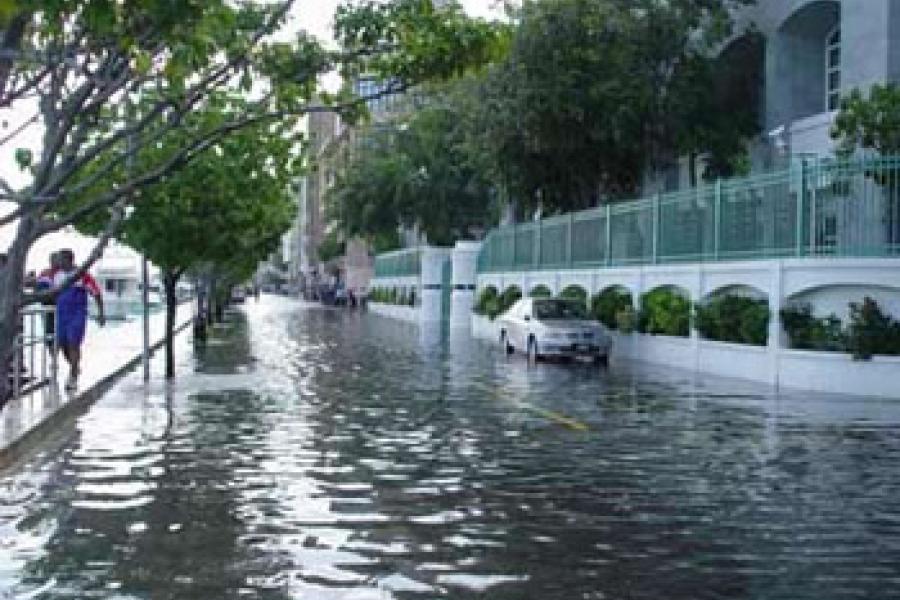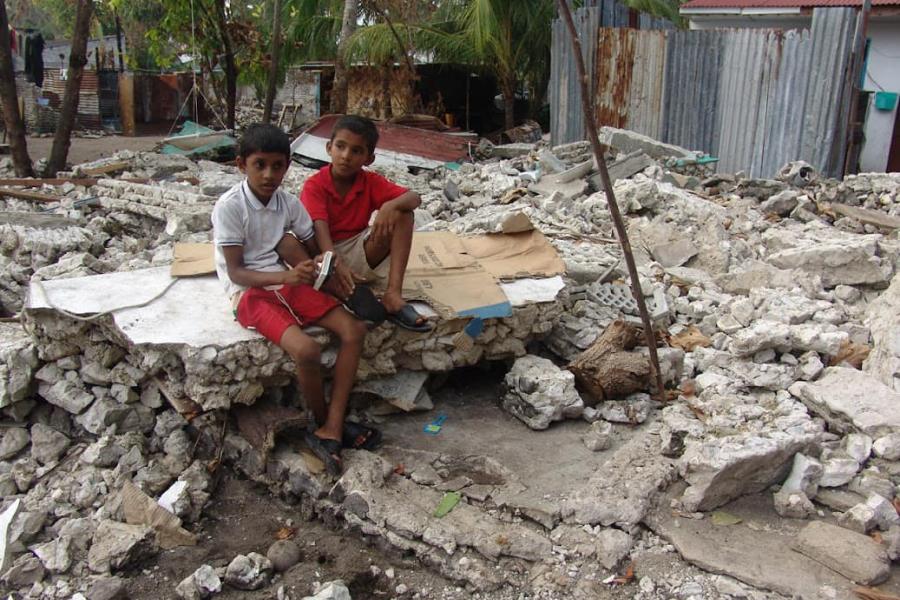Charting a Resilient Future: The Maldives' 20-Year Journey from Tsunami Tragedy to Global Climate Leadership

The tsunami exposed the Maldives' vulnerabilities and highlighted the absence of early warning systems
On December 26, 2004, a calm morning in the Maldives turned into a nightmare as a 9.1-magnitude earthquake originating near Sumatra triggered a devastating tsunami in Asia. With an average elevation of just 1.5 meters above sea level, the tsunami had devastating impacts on the Maldives. Among the 199 inhabited islands, 190 were affected. The direct losses were estimated at US$ 24.75 million. Saltwater intrusion destroyed about half of the cultivated land, leading to agricultural losses of US$ 6.46 million. At least 116 out of 315 schools were affected, and the health sector suffered significant damage, with a capital loss of around US$ 12 million, including the destruction of one regional hospital, two atoll hospitals, 19 health centers, and 21 health posts. A total of 5,215 houses needed repairs, while 2,879 required reconstructions. The tsunami forced 21 of the 87 tourist resorts to close, and six were severely damaged and had to be rebuilt. The updated National Recovery and Reconstruction Plan (NRRP) estimated the total recovery cost at US$ 393 million, excluding US$ 100 million in damages to tourist resorts. Infrastructure reconstruction alone was projected to cost US$ 390 million. The disaster claimed 82 lives, left 26 missing, and displaced over 15,000 people. A staggering toll for a nation of fewer than 300,000 people.

The tsunami exposed the Maldives' vulnerabilities and highlighted the absence of early warning systems. However, it also became a turning point, sparking efforts to rebuild not only homes and infrastructure but also national resilience. The government declared a state of national disaster, established a task force, and for the first time in history created the National Disaster Management Center (NDMC), laying the foundation for short-term recovery and long-term disaster risk management. International aid flowed in, and the communities worked together in the aftermath for immediate response to those in need. The Government of Maldives therefore declared 24 December as the Day of Unity for Maldives, to be marked in remembrance of the spirit of national unity and solidarity shown by the people in the immediate aftermath of the devastating 2004 Asian tsunami.

Over the past 20 years, the Maldives has made significant strides in disaster risk reduction. The NDMC evolved into the National Disaster Management Authority (NDMA), which integrates disaster preparedness with climate risk management in line with the Disaster Management Act (28/2015). One of the key current initiatives in Maldives’ leadership in disaster reduction Early Warnings for All Initiative (EW4All), initiated by the UN Secretary General with Maldives being one of the first 30 pilot countries selected in 2023. The EW4ALL roadmap combines real-time hazard monitoring with community engagement with costed actions aimed to ensure all Maldivians receive timely and actionable warnings.
By developing the first national roadmap endorsed at the Presidential level worldwide, Maldives has demonstrated leadership in resilience building, especially for Small Island Developing States (SIDS). This leadership role was amplified at the SIDS4 Conference in Antigua and Barbuda held in September 2024, where His Excellency President Dr. Mohamed Muizzu called for urgent climate adaptation financing and equitable access to early warning systems, emphasizing that the Maldives story is not only about inherent vulnerabilities or worrying concerns. It is also one of determination to protect the people, values, and culture and one that showcases a strong commitment to safeguard biodiversity in the land and ocean.
Furthermore, during the Summit of the Future and the UN General Assembly 79 held in September 2024, President Dr. Mohamed Muizzu led the high-level delegation and underscored the existential threat posed by climate change.
"We must combat climate change. This is the biggest threat to present and future generations. It is time for the multilateral system to produce tangible results."
The President also addressed the mental toll of climate anxiety, which affects nearly 62% of youth globally, urging international solidarity to combat the crisis. Therefore, youth engagement is prioritized as a key area for Maldives' disaster preparedness strategy. This was exemplified by the participation of Ms. Aishath Shamma from the NDMA, representing Maldives at the 2024 World Tsunami Awareness Day in New York. Reflecting on her work, Shamma said,
"The Maldives of today is vastly different from the nation we were on that fateful day. We’ve rebuilt, but we now face new challenges posed by climate change. My work is driven by a commitment to creating disaster-ready, resilient island communities."
Despite progress, the Maldives remains on the frontlines of the climate crisis, facing rising sea levels, coastal erosion, and extreme weather events. However, the lessons learned from the 2004 tsunami have reinforced the nation’s resolve to adapt, innovate, and safeguard its future.
As the Maldives commemorates 20 years since the tsunami, it honors the lives lost and celebrates the resilience built. The nation’s journey from devastation to recovery serves as a testament to collective strength, innovation, and determination, exemplifying how even the most vulnerable nations can cultivate resilience.





